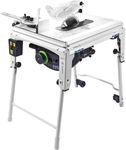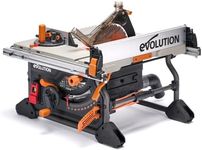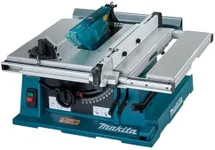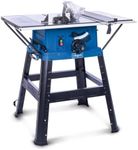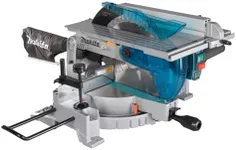Buying Guide for the Best Table Saws
When choosing a table saw, it's important to consider the type of projects you'll be working on, the space you have available, and your level of experience. Table saws are versatile tools that can make precise cuts in wood and other materials, but selecting the right one involves understanding various specifications that affect performance, safety, and convenience. By focusing on these key specifications, you can find a table saw that meets your needs and enhances your woodworking experience.Motor PowerMotor power in table saws is measured in horsepower (HP) and determines how easily the saw can cut through different materials. More powerful motors can handle thicker and harder materials with ease, while less powerful motors are suitable for lighter tasks. Typically, table saws range from 1.5 HP to 5 HP. If you're a hobbyist working on small projects, a lower HP might suffice. However, for professional or heavy-duty use, a higher HP is recommended to ensure smooth and efficient cutting.
Blade SizeThe blade size of a table saw affects the depth of cut it can achieve. Common blade sizes are 10 inches and 12 inches. A 10-inch blade is suitable for most general woodworking tasks and is the most common size found in table saws. A 12-inch blade can cut deeper and is better for larger projects or thicker materials. Consider the types of projects you plan to undertake; if you frequently work with thicker materials, a larger blade might be necessary.
Rip CapacityRip capacity refers to the maximum width of material that can be cut using the table saw. This is determined by the distance between the blade and the fence. A larger rip capacity allows for cutting wider pieces of wood, which is important for larger projects like cabinetry or furniture making. If you primarily work on smaller projects, a smaller rip capacity may be sufficient. However, for versatility and future-proofing, a larger rip capacity can be beneficial.
Table SizeThe size of the table on a table saw affects the stability and support of the material being cut. A larger table provides more support for larger pieces, reducing the risk of inaccurate cuts or material tipping. If you have a dedicated workshop space and work on large projects, a larger table is advantageous. For those with limited space or who work on smaller projects, a compact table might be more appropriate.
Dust CollectionDust collection is an important feature for maintaining a clean and safe working environment. Table saws with effective dust collection systems help minimize airborne dust, which can be harmful to health and cause a mess in your workspace. Look for saws with built-in dust ports that can be connected to a vacuum or dust collection system. If you work in a small or enclosed space, prioritizing good dust collection is crucial for health and cleanliness.
Safety FeaturesSafety features on table saws are crucial to prevent accidents and injuries. Common safety features include blade guards, riving knives, and anti-kickback pawls. Some modern table saws also have advanced safety technologies that can stop the blade quickly if contact with skin is detected. When choosing a table saw, consider your experience level and the importance of safety in your workspace. Opt for models with comprehensive safety features, especially if you're new to using table saws.



